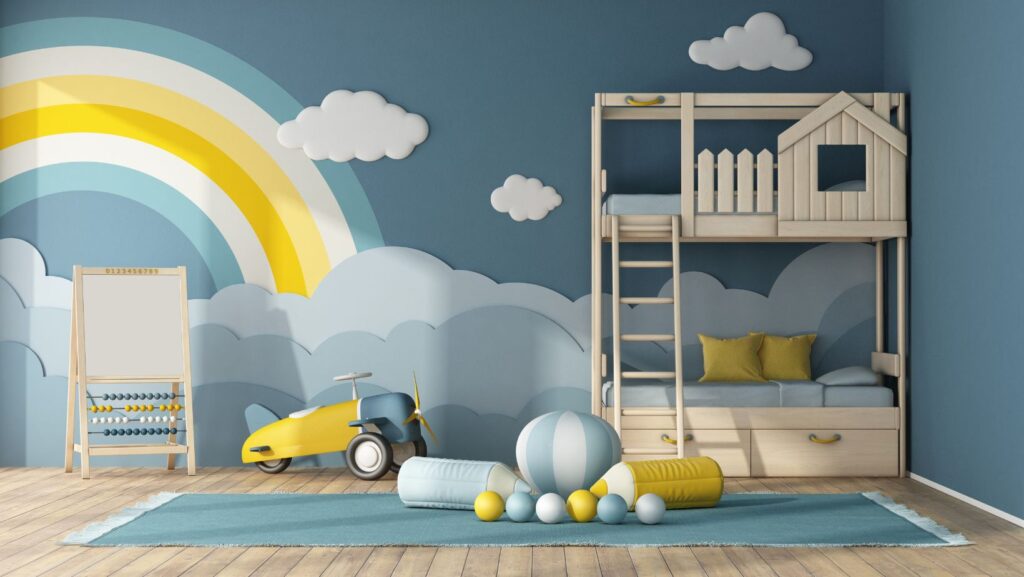Choosing the right bed for a child’s room can be a challenging task. Two popular options are cabin beds and mid sleeper beds. These designs offer unique features that cater to different needs for personal growth and preferences.
Cabin beds and mid sleeper beds are elevated sleeping platforms that provide additional space underneath for storage or play areas. While often used interchangeably, there are subtle differences between the two. Cabin beds typically have a more enclosed design with built-in storage solutions. Mid sleeper beds, on the other hand, are slightly raised platforms with open space below, offering versatility for customization.
The perfect mid sleeper bed for kids can transform a child’s room into a multifunctional space. These beds maximize floor area in smaller bedrooms while providing a fun and imaginative sleeping environment. The choice between a cabin bed and a mid sleeper depends on factors such as room size, storage needs, and the child’s preferences.
Key Takeaways
- Cabin beds have enclosed designs with built-in storage, while mid sleepers offer open space underneath
- Both bed types maximize floor space and provide versatile options for children’s rooms
- Factors like room size, storage needs, and child preferences influence the choice between cabin and mid sleeper beds
Defining the Beds
Cabin beds and mid sleeper beds offer unique features for children’s bedrooms. These space-saving designs incorporate storage and functionality while providing comfortable sleeping areas.
Cabin Bed Characteristics
Cabin beds sit lower to the ground, typically 2-3 feet high. They often include built-in drawers underneath for extra storage. Some models feature headboards with shelving or small cubbies.
Cabin beds are ideal for younger children due to their lower height. This reduces fall risks and makes it easier for kids to get in and out of bed.
Many cabin beds incorporate play elements like tents or slides. These additions transform the bed into a fun space for daytime activities.
Mid Sleeper Bed Features
Mid sleeper beds are elevated higher than cabin beds, usually around 4 feet tall. They require a ladder or short staircase for access.
The extra height creates usable space underneath. This area often houses desks, shelving units, or additional storage solutions.
Mid sleepers are suitable for older children who can safely climb ladders. The raised design maximizes floor space in smaller bedrooms.
Some mid sleeper models include built-in wardrobes or pull-out desks. These features make efficient use of vertical space in children’s rooms.
Comparison and Considerations
Cabin and mid sleeper beds offer unique benefits for children’s bedrooms.

The choice between these two options depends on several factors that impact functionality, safety, and overall room design.
Safety and Comfort
Both cabin and mid sleeper beds prioritize safety with sturdy construction and guardrails. Cabin beds typically sit lower to the ground, making them suitable for younger children or those who move frequently during sleep. Mid sleepers, positioned higher, often include ladders or steps for access.
Mid sleepers may require more caution for smaller children but can be an exciting “big kid” option. Some models feature slide-out desks or play areas underneath, adding fun elements while maintaining safety.
Comfort is key in both designs. Many cabin and mid sleeper beds accommodate standard mattress sizes, ensuring a good night’s sleep. Parents should consider their child’s age, size, and sleeping habits when choosing between the two.
Space Utilization and Versatility
Space-saving is a primary advantage of both bed types. Cabin beds often include built-in storage drawers or shelving units underneath. This design maximizes floor space while providing ample storage for toys, clothes, or bedding.
Mid sleepers take space utilization a step further. The elevated design creates a usable area beneath the bed frame. This space can be customized with:
- Study desks
- Play areas
- Additional storage solutions
- Seating options
Mid sleepers offer more versatility in room layout and functionality. They’re ideal for smaller bedrooms or shared spaces, effectively creating two distinct areas within one footprint.
Designs and Dimensions
Cabin beds typically range from 80-120 cm in height, while mid sleepers stand taller at 115-150 cm. Both styles come in various widths to accommodate different mattress sizes, from single to small double.
Design aesthetics vary widely:
- Cabin beds often feature a more traditional look
- Mid sleepers can have modern, minimalist, or themed designs
Many manufacturers offer customizable options, allowing parents to choose finishes, colors, and additional features. Some popular themes include:
- Castle-inspired designs
- Treehouse looks
- Race car styles
The visual impact on the room differs between the two. Cabin beds blend more seamlessly with other furniture, while mid sleepers become a focal point and play structure in one.
Additional Features
Both bed types can include a range of extra features to enhance functionality and appeal. Cabin beds might offer:
- Pull-out guest beds
- Integrated bookshelves
- Toy boxes
Mid sleepers often provide more extensive add-ons:
- Slides for playful exits
- Tent-like canopies for imaginative play
- Climbing walls for active children
Some models include modular components, allowing the bed to grow and change with the child’s needs. This adaptability can extend the bed’s usable life, making it a more cost-effective choice in the long run.
When selecting additional features, consider the child’s interests, the room’s size, and long-term practicality. While exciting add-ons can be tempting, ensure they don’t compromise the bed’s primary function of providing a comfortable sleeping space.
Conclusion
Cabin beds and mid sleeper beds offer unique advantages for children’s rooms. Cabin beds provide a lower sleeping surface, ideal for younger kids and safer access. Mid sleepers feature elevated platforms, maximizing floor space underneath for storage or play areas.
Both designs incorporate clever storage solutions and versatile configurations.

The choice between them ultimately depends on the child’s age, room size, and specific needs. Carefully considering these factors will help parents select the optimal bed type for their child’s bedroom.
